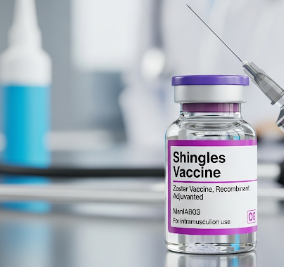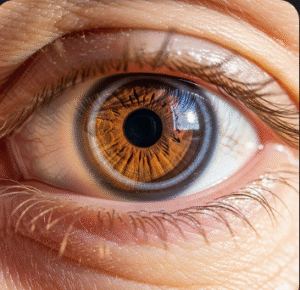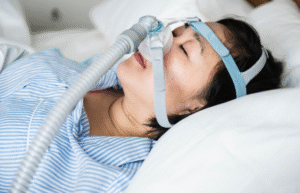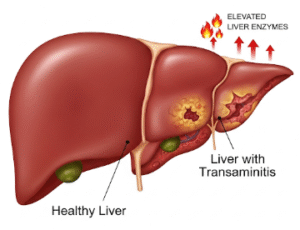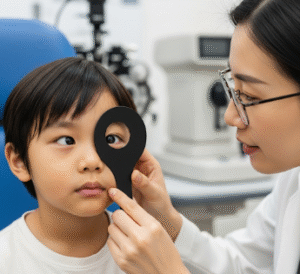What it is
The shingles vaccine is a preventive immunization that protects against herpes zoster (shingles), a painful skin rash caused by the reactivation of the varicella-zoster virus (the same virus that causes chickenpox).
➡ Key facts:
- ✔ After a person has chickenpox, the virus remains dormant in the nervous system and may reactivate later in life as shingles.
- ✔ Shingles usually affects adults over 50 and causes painful blisters, nerve pain, and possible complications like postherpetic neuralgia (PHN).
- ✔ Vaccination significantly lowers the risk of developing shingles and its long-term nerve pain.
- ✔ In Korea, shingles vaccines are widely available in general hospitals, community clinics, and vaccination centers.
Why it’s done
Doctors in Korea recommend the shingles vaccine to:
➤ Prevent shingles outbreaks in adults, especially those over 50.
➤ Reduce severity of symptoms if shingles occurs.
➤ Prevent complications like postherpetic neuralgia, vision loss (if shingles affects the eye), or bacterial infections.
➤ Lower hospitalizations among elderly and immunocompromised patients.
⚠ Shingles is not usually life-threatening, but it causes severe pain and long-term complications in many cases. Vaccination is the best protection.
Types of Shingles Vaccines in Korea
There are two main vaccines used in Korea:
✔ Zostavax (live attenuated vaccine):
- Single-dose injection.
- Provides moderate protection, especially in younger seniors.
- Not recommended for severely immunocompromised patients.
✔ Shingrix (recombinant vaccine):
- Two-dose schedule (2–6 months apart).
- Provides >90% protection across all age groups.
- Safe for immunocompromised individuals.
- More commonly recommended in Korea today.
Preparation
🔹 Eligibility check → Recommended for adults 50 years and older, or earlier if immunocompromised.
🔹 Medical review → Patients with severe illness, pregnancy, or certain allergies should consult their doctor first.
🔹 Medication assessment → Some immune-suppressing medications may affect vaccine timing.
🔹 No fasting needed → The injection can be given without dietary restrictions.
How it’s done
➡ Step-by-step vaccination process in Korea:
- Consultation → Doctor evaluates age, health status, and medical history.
- Injection → Given in the upper arm (deltoid muscle).
- Zostavax → one injection.
- Shingrix → two injections, 2–6 months apart.
- Observation period → Patient monitored for 15–30 minutes to check for side effects.
- Vaccination card update → Korean clinics issue vaccination records for future reference.
Effectiveness & Success Rate
✔ Zostavax: Prevents shingles in about 50–60% of people, stronger in younger seniors (50–69 years).
✔ Shingrix: Provides >90% protection against shingles and postherpetic neuralgia across all age groups.
✔ Protection duration:
- Zostavax → effectiveness declines after 5–10 years.
- Shingrix → long-lasting protection (at least 10+ years, according to current studies).
Recovery / Expected Outcomes
✔ Most people experience mild side effects only, such as redness, swelling, or soreness at the injection site.
✔ Some may feel fatigue, headache, muscle aches, or mild fever for 1–3 days.
✔ No downtime needed — patients can return to normal activities immediately.
✔ Full protection develops within 2–4 weeks after vaccination (Shingrix requires both doses).
Complications / Risks
⚠ While generally safe, the shingles vaccine may cause:
➡ Mild side effects:
- Pain, swelling, or redness at injection site.
- Fever, chills, or mild body aches.
➡ Rare reactions:
- Severe allergic reactions (anaphylaxis).
- Guillain-Barré syndrome (extremely rare with Shingrix).
Important in Korea:
- Zostavax should not be given to people with severely weakened immune systems.
- Shingrix is preferred for cancer patients, transplant recipients, or those on immunosuppressive therapy.
Treatment Options in Korea (If Shingles Occurs Despite Vaccination)
🔹 Diagnosis
- Physical examination of rash + PCR test for varicella-zoster virus.
🔹 Medical treatments
- Antiviral medications (acyclovir, valacyclovir, famciclovir).
- Pain management with anti-inflammatories, nerve pain medications.
🔹 Surgical / advanced therapies
- Rarely needed, but eye complications may require ophthalmic surgery.
🔹 Rehabilitation & Support
- Nerve pain therapy for postherpetic neuralgia.
- Physiotherapy and acupuncture (widely used in Korea for nerve pain relief).
- Counseling for chronic pain management.
Top Hospitals & Clinics in Korea for Shingles Vaccination
🏥 Seoul National University Hospital (SNUH) – Advanced vaccination and infectious disease care.
🏥 Asan Medical Center – Offers Shingrix and Zostavax, with strong patient monitoring.
🏥 Samsung Medical Center – Widely trusted for senior preventive health.
🏥 Yonsei Severance Hospital – Specializes in geriatric vaccination programs.
🏥 Local Community Health Centers (보건소) – Provide affordable vaccination for older adults.
Conclusion
The shingles vaccine in Korea is an essential preventive measure for adults, especially those over 50.
✔ Reduces risk of shingles and long-term nerve pain.
✔ Widely available in both major hospitals and local clinics.
✔ Shingrix is the preferred choice due to its higher protection and safety in immunocompromised people.
✔ Safe, effective, and a key step in maintaining quality of life in older age.
By adopting strong vaccination programs, Korea helps prevent the painful burden of shingles and improves long-term health outcomes for its aging population.

